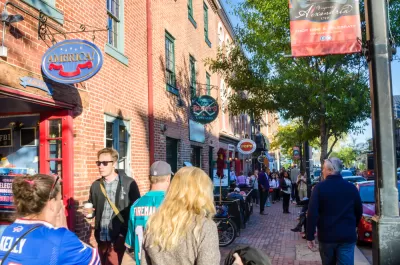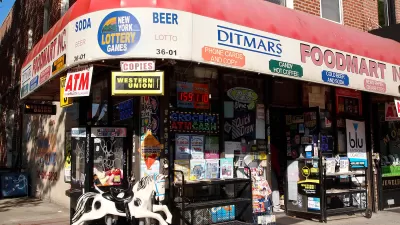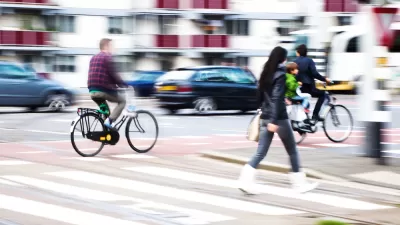What does a '15-minute city' truly mean–and how achievable is it in the U.S.?

Alan Ehrenhalt explores the complications of the popular "15-minute city" concept, asking "[w]hat exactly makes a 15-minute city, anyway? And is it a new idea or just a slogan that has been grafted onto some urbanist schemes that have been floating around for many years?"
The crux of "15-minute city" discussions is "the simple idea that we should be able to buy or do just about anything we want by walking 15 minutes or less." This mile-long walk, argues Ehrenhalt, may actually be unattractive to many Americans. "That’s why some critics have said that if we are talking exclusively about walking, the idea of a five- or 10-minute city might be more realistic. It will also be much more difficult to achieve, to say the least." When it comes to biking, Ehrenhalt worries that "the number of bike lanes required to create a central element of the redesigned city are far more than we have built anywhere so far, even in the most progressive cities."
Ehrenhalt poses similar questions about transit: "what does 15-minute transit really mean? If you’re talking about door to door, there really aren’t many transit trips that can be completed in 15 minutes. If you’re talking about a bus or train station within 15 minutes of home, it’s something we clearly ought to work toward, but it doesn’t suggest brief and convenient trips."
While laudable, the goal of truly creating 15-minute cities and neighborhoods in many U.S. cities, Ehrenhalt writes, is "[n]ot impossible, but very difficult."
FULL STORY: The Elusive Dream of the 15-Minute City

Alabama: Trump Terminates Settlements for Black Communities Harmed By Raw Sewage
Trump deemed the landmark civil rights agreement “illegal DEI and environmental justice policy.”

Planetizen Federal Action Tracker
A weekly monitor of how Trump’s orders and actions are impacting planners and planning in America.

The 120 Year Old Tiny Home Villages That Sheltered San Francisco’s Earthquake Refugees
More than a century ago, San Francisco mobilized to house thousands of residents displaced by the 1906 earthquake. Could their strategy offer a model for the present?

LA’s Tree Emergency Goes Beyond Vandalism
After a vandal destroyed dozens of downtown LA trees, Mayor Karen Bass vowed to replace them. Days later, she slashed the city’s tree budget.

Sacramento Leads Nation With Bus-Mounted Bike Lane Enforcement Cameras
The city is the first to use its bus-mounted traffic enforcement system to cite drivers who park or drive in bike lanes.

Seattle Voters Approve Social Housing Referendum
Voters approved a corporate tax to fund the city’s housing authority despite an opposition campaign funded by Amazon and Microsoft.
Urban Design for Planners 1: Software Tools
This six-course series explores essential urban design concepts using open source software and equips planners with the tools they need to participate fully in the urban design process.
Planning for Universal Design
Learn the tools for implementing Universal Design in planning regulations.
Ada County Highway District
Clanton & Associates, Inc.
Jessamine County Fiscal Court
Institute for Housing and Urban Development Studies (IHS)
City of Grandview
Harvard GSD Executive Education
Toledo-Lucas County Plan Commissions
Salt Lake City
NYU Wagner Graduate School of Public Service





























